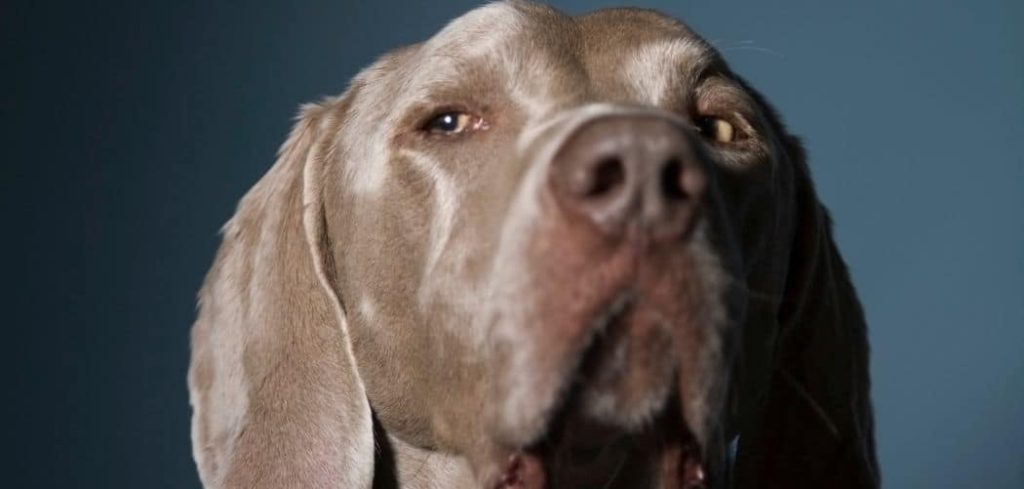It’s easy to assume your dog is just being stubborn when they suddenly refuse to eat, especially if they’re acting otherwise normal. But when dogs skip meals, there’s usually more happening beneath the surface.
What looks like “stubbornness” may actually be discomfort, emotional stress, or confusion—and understanding the true cause is key to helping your dog eat again.
We outline the deeper reasons why your dog might be refusing food and what steps you can take to solve it.
Why Is My Dog Being Stubborn and Not Eating?
A dog that seems stubborn and isn’t eating might actually be dealing with dental issues, food aversion, gastrointestinal discomfort, anxiety, overfeeding, behavioral conditioning, or underlying illness.
What appears to be pickiness can be driven by subtle forms of pain, stress, confusion, or learned habits—not just willful refusal.

Why Your Dog Is Being Stubborn and Not Eating
1. Dental Pain or Oral Discomfort
A very common cause of “stubborn” eating behavior is mouth pain. Dogs with dental issues may avoid food—not because they’re picky, but because chewing hurts.
Potential oral problems include:
Gingivitis or periodontal disease
Tooth abscesses
Loose or broken teeth
Oral ulcers or tumors
Signs include chewing on one side, dropping food, bad breath, or drooling. Many dogs will seem fine otherwise, leading owners to believe they’re just being stubborn—but in reality, the act of eating is simply painful.
2. Food Aversion or Sensory Rejection
Dogs can develop food aversions for a number of reasons, including:
Association with a bad experience (like vomiting after a meal)
Changes in smell or taste of the food (especially in canned diets)
Spoiled or rancid ingredients
Sensitive noses reacting to artificial flavors or preservatives
Even minor formulation changes in your dog’s usual food can cause refusal. If your dog sniffs the food, turns away, or paws at the bowl, it may not be stubbornness—it might just be an honest dislike or aversion.
Related: Dog vomiting and not eating (Causes and when to worry)
3. Gastrointestinal Upset
Mild digestive discomfort—like gas, bloating, nausea, or acid reflux—can temporarily suppress appetite. Dogs often try to protect themselves by avoiding food if their stomach doesn’t feel right.
Signs include:
Eating grass or licking surfaces
Burping or lip-smacking
Approaching the bowl but walking away
Intermittent vomiting or diarrhea
This can make your dog seem fussy or unpredictable with meals, but the underlying cause is typically a mild and manageable upset.
4. Anxiety or Emotional Stress
Stress and anxiety can significantly impact appetite. While some dogs stress-eat, many lose their desire to eat altogether when anxious.
Triggers include:
Loud noises (construction, storms)
Routine changes (new schedule, travel)
New pets, visitors, or environmental changes
Separation from the primary caregiver
Stressed dogs may act clingy, hide, or seem aloof, and their meal refusal may come across as stubborn defiance. But in reality, their nervous system is in overdrive, suppressing hunger.
5. Behavioral Conditioning (Learned Picky Eating)
Dogs are quick learners—and sometimes, their refusal to eat is a learned behavior reinforced by well-meaning owners. For example:
Offering treats or table food when they don’t eat kibble
Giving a different food after skipping a meal
Hand-feeding to encourage them
Constantly switching diets
This creates a pattern where your dog learns: “If I hold out, I’ll get something tastier.” It looks like stubbornness, but it’s really clever habit reinforcement.
6. Overfeeding or Excessive Treats
If your dog is getting too many treats, snacks, or table scraps, they may not be hungry at mealtime. Even a few rich snacks can throw off their calorie needs for the day.
Other signs of overfeeding include:
Skipping breakfast but begging at dinner
Eating only when very hungry
Gaining weight despite “not eating much”
Dogs are opportunistic feeders—if they know there’s something better coming, they may “opt out” of their main meal and wait you out. This can be mistaken for being stubborn.
7. Underlying Illness or Discomfort
Sometimes the refusal to eat is the first subtle sign of illness, especially in early stages of:
Pancreatitis
Kidney or liver issues
Inflammatory bowel disease (IBD)
Infections or fevers
In these cases, dogs may still appear alert or active but seem picky or off at mealtime. It’s important not to dismiss repeated refusal as mere stubbornness if it persists beyond a day or two.
What to Do If Your Dog Isn’t Eating and Seems Stubborn
If your dog seems healthy but is skipping meals:
Limit treats and eliminate table scraps completely
Stick to one food—avoid changing brands frequently
Offer food for 15–20 minutes, then remove it without comment
Feed in a calm, quiet place with minimal distractions
Warm the food slightly to release aroma and improve palatability
Try hand-feeding gently, but don’t make it a regular habit
Consistency is key. Avoid giving in to demands, as this can reinforce the behavior.
When to Call or Visit Your Vet
Call your vet if your dog:
Refuses food for more than 24–48 hours
Shows signs of pain, vomiting, or diarrhea
Acts lethargic, disoriented, or unusually quiet
Has lost weight, vomited repeatedly, or seems bloated
Is a senior or has known chronic health issues
A physical exam, bloodwork, and possibly imaging may be necessary to rule out serious causes or subtle illnesses.
Key Takeaway
When your dog refuses food and seems stubborn, it’s rarely about being difficult. Whether it’s due to emotional triggers, discomfort, or a learned habit, your dog is trying to tell you something—and it’s up to you to listen with empathy and consistency.
By observing their behavior closely, removing potential reinforcements, and seeking vet care when necessary, you can help restore your dog’s healthy eating habits without frustration or guesswork.
